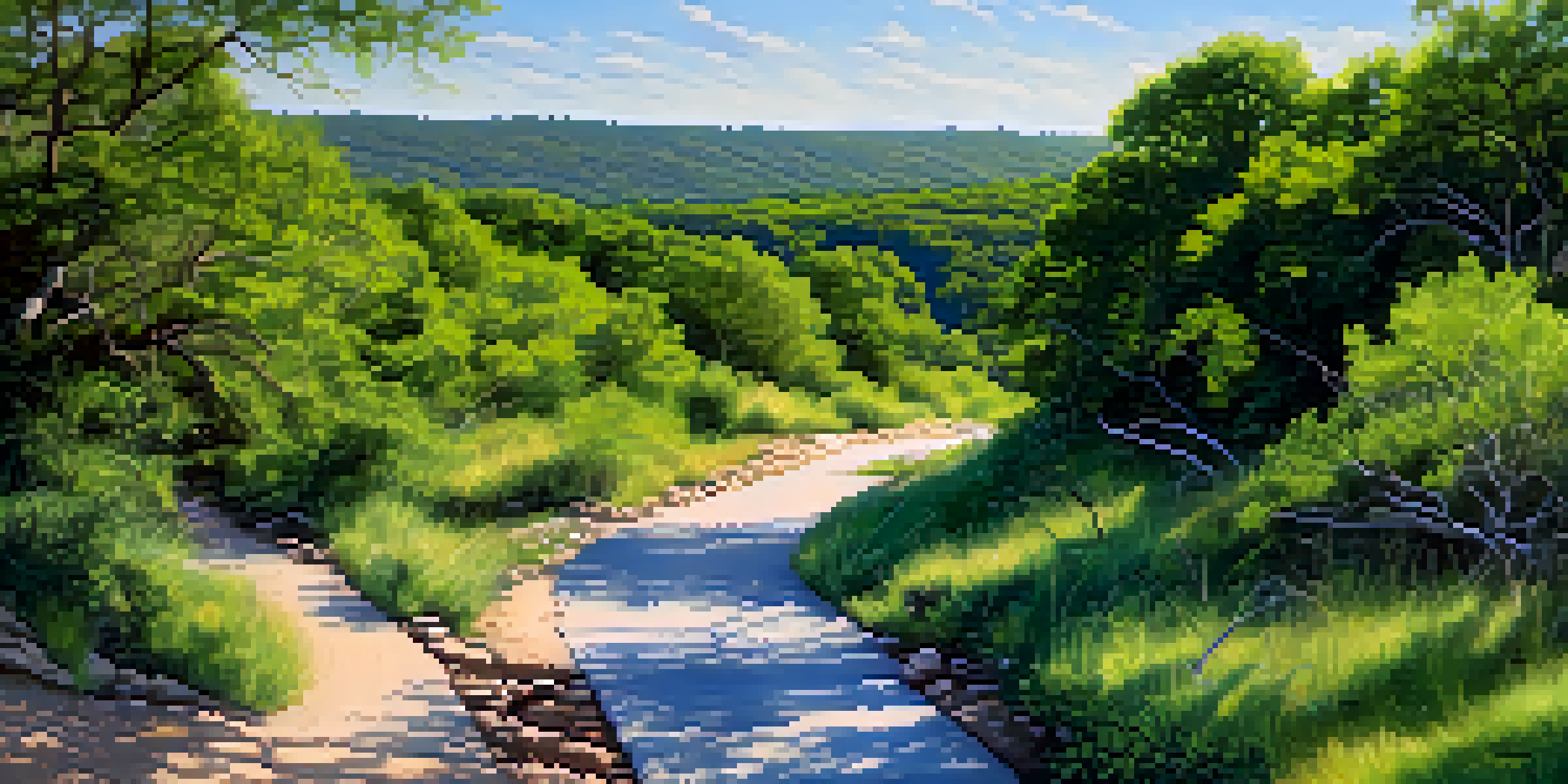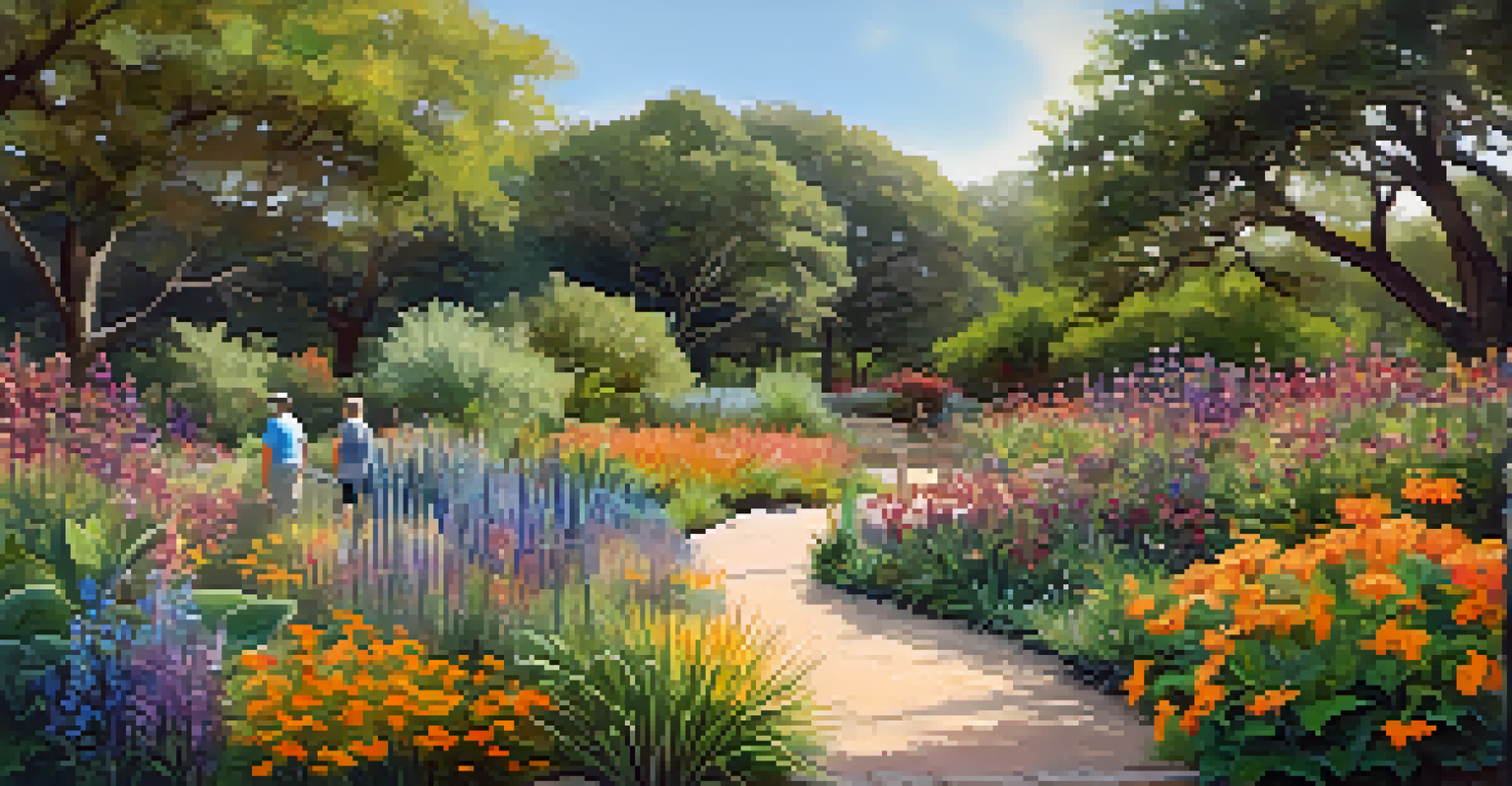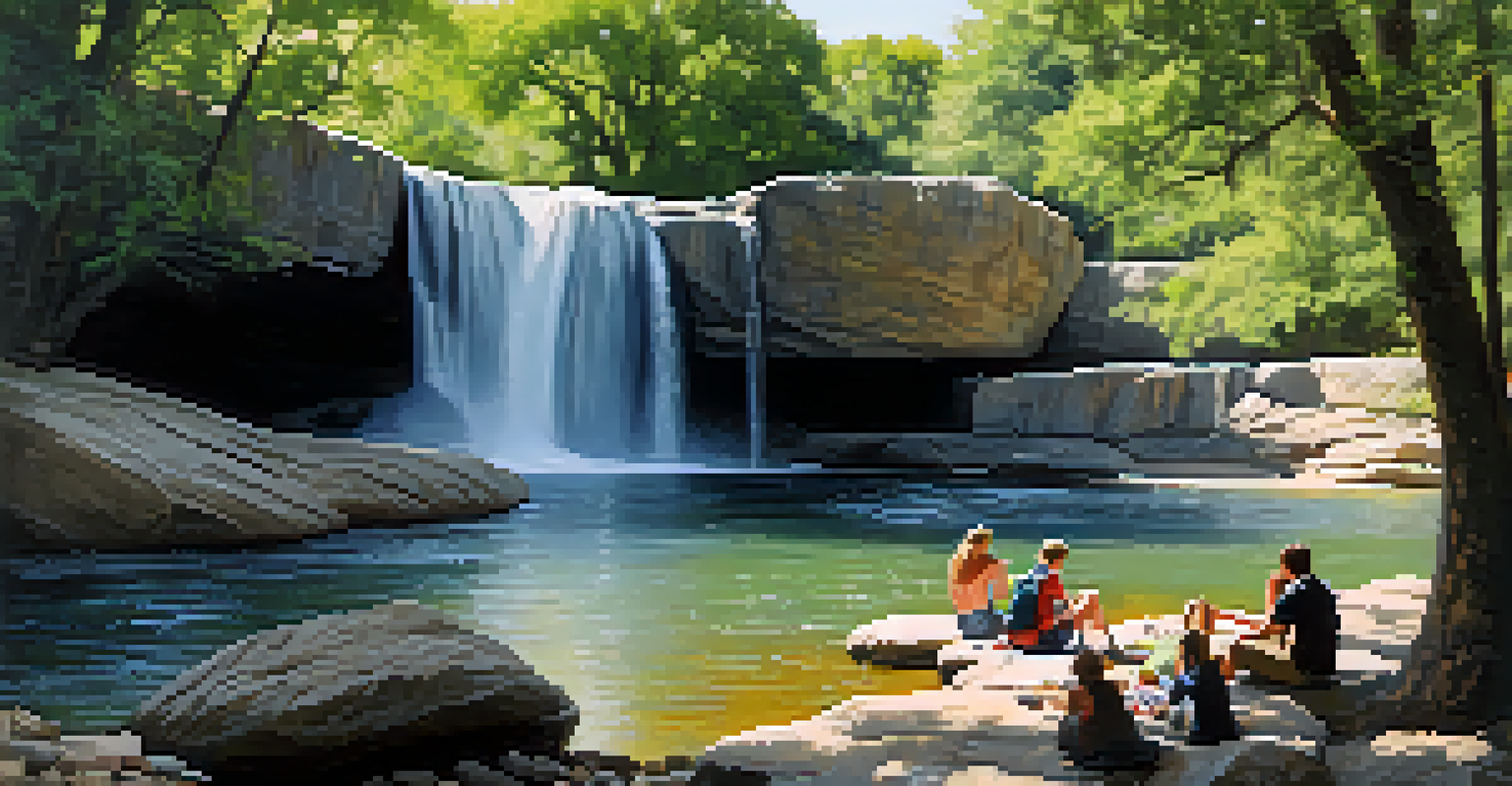Austin's Natural Reserves: Preserving Nature in the City

Understanding Austin's Unique Ecosystem and Biodiversity
Austin is home to a remarkable diversity of flora and fauna, making it a unique urban ecosystem. From the vibrant wildflowers of the Texas Hill Country to the lush greenery along its waterways, the city is a haven for nature lovers. This biodiversity not only enriches the visual landscape but also contributes to the ecological balance essential for urban life.
In every walk with nature one receives far more than he seeks.
The city's natural reserves play a crucial role in supporting local wildlife, providing habitats for birds, insects, and other species that depend on these areas for survival. For instance, the Barton Springs Pool area is not just a popular swimming spot; it also serves as a sanctuary for endangered species like the Barton Springs salamander. Understanding this interconnectedness helps residents appreciate the importance of preserving these natural spaces.
Moreover, as urban development continues to rise, maintaining these natural reserves becomes increasingly vital. They act as green lungs for the city, improving air quality and offering residents a respite from the hustle and bustle of city life. In a world where nature is often sidelined, Austin stands out by prioritizing the conservation of its unique ecosystems.
Key Natural Reserves to Explore in Austin
Austin boasts several natural reserves that are perfect for outdoor enthusiasts and families alike. The Barton Creek Greenbelt, for instance, stretches over seven miles and features stunning limestone cliffs, lush forests, and winding trails, making it a favorite spot for hiking, biking, and swimming. Its diverse landscape offers a different adventure at every turn, appealing to both seasoned adventurers and casual walkers.

Another gem is the Lady Bird Johnson Wildflower Center, where visitors can immerse themselves in Texas' native plants and flowers. This reserve not only showcases the beauty of local flora but also emphasizes the importance of conservation through education and community involvement. Walking through the center, you’ll find a vibrant display of colors and scents that highlight the beauty of Texas’ natural heritage.
Austin's Biodiversity is Unique
The city's diverse flora and fauna create a vital urban ecosystem that supports local wildlife and enhances ecological balance.
Lastly, the McKinney Falls State Park provides a serene escape with its picturesque waterfalls and scenic picnic spots. This park is perfect for families looking to spend a day in nature, offering trails for hiking and swimming areas to cool off during those hot Texas summers. Each of these reserves showcases the city's commitment to preserving natural beauty amidst urbanization.
The Role of Community in Conservation Efforts
Community involvement is a cornerstone of conservation efforts in Austin. Local organizations and volunteers often come together for clean-up events, tree planting, and educational workshops to promote awareness about the importance of natural reserves. These grassroots initiatives not only enhance the natural environment but also foster a sense of community and shared responsibility among residents.
The environment is where we all meet; where we all have a mutual interest; it is the one thing all of us share.
Programs like the Austin Parks Foundation encourage residents to take an active role in preserving their natural surroundings. By participating in various events, residents gain a deeper understanding of the ecosystems they inhabit and the challenges they face. This hands-on approach not only empowers individuals but also builds a community that values and protects its natural resources.
Moreover, local schools often incorporate environmental education into their curriculums, encouraging the younger generation to appreciate and care for nature. By instilling these values early on, Austin is nurturing a culture of environmental stewardship that will carry on for years to come, ensuring that its natural reserves remain protected for future generations.
Balancing Urban Development with Nature Conservation
As Austin continues to grow as a vibrant urban center, balancing development with nature conservation presents a significant challenge. City planners are increasingly recognizing the importance of incorporating green spaces into urban designs. This approach not only enhances the city’s aesthetic appeal but also promotes mental well-being among residents who benefit from easy access to nature.
One innovative solution has been the implementation of green roofs and vertical gardens in new buildings. These features not only reduce urban heat but also provide additional habitats for wildlife, demonstrating that urbanization and nature can coexist harmoniously. By integrating nature into the urban fabric, Austin is setting an example for other cities to follow.
Community Drives Conservation Efforts
Local involvement in clean-ups and educational programs fosters a culture of environmental stewardship and shared responsibility.
However, this balance requires continuous dialogue between developers, policymakers, and the community. Engaging in discussions about land use and conservation priorities ensures that growth does not come at the expense of the city's natural resources. With thoughtful planning and community input, Austin can thrive as a city that honors both its urban ambitions and its commitment to preserving nature.
The Health Benefits of Connecting with Nature
Spending time in nature has numerous health benefits that are especially important in today’s fast-paced world. Studies have shown that regular exposure to green spaces can reduce stress, enhance mood, and improve overall mental well-being. For residents of Austin, the city's natural reserves offer a perfect escape to recharge and reconnect with themselves.
Engaging in outdoor activities such as hiking, biking, or even simply walking through a park can also encourage physical fitness. The diverse landscapes of Austin's reserves provide ample opportunities for exercise, whether it's scaling the trails of the Greenbelt or enjoying a leisurely stroll at the Wildflower Center. This active lifestyle contributes to better physical health and promotes a sense of community among those who share these spaces.
Moreover, connecting with nature fosters a sense of gratitude and mindfulness, allowing individuals to appreciate the beauty around them. When people prioritize time outdoors, they often find themselves more present and engaged in their day-to-day lives. By embracing the natural reserves of Austin, residents are not only preserving these spaces but also enhancing their own quality of life.
Educational Programs Promoting Environmental Awareness
Austin’s natural reserves are not just places to visit; they are also centers for learning and environmental education. Various programs and workshops are designed to teach residents about local ecosystems, wildlife conservation, and sustainable practices. These educational initiatives empower individuals to take informed actions in their daily lives, fostering a culture of environmental responsibility.
For example, the Austin Nature and Science Center offers hands-on learning experiences for children and families, allowing them to explore the wonders of nature firsthand. By engaging with interactive exhibits and participating in guided nature walks, visitors gain a deeper appreciation of the ecosystems surrounding them. This engagement with nature is not just informative but also inspires stewardship and advocacy for the environment.
Balancing Growth and Nature
As Austin urbanizes, integrating green spaces into development is crucial for preserving natural reserves and promoting well-being.
Additionally, community partnerships with local schools ensure that environmental education is woven into the fabric of Austin’s youth curriculums. By teaching children about conservation and biodiversity, future generations will be better equipped to tackle environmental challenges. The more knowledge the community has, the stronger the collective effort to preserve Austin's natural reserves.
The Future of Austin's Natural Reserves
Looking ahead, the future of Austin's natural reserves hinges on continued commitment and innovative solutions to conservation. As urbanization expands, it is vital for the city to prioritize the preservation of these green spaces. Planning initiatives that integrate nature into urban development will play a crucial role in ensuring these areas remain accessible for all residents.
Moreover, fostering community involvement through volunteer programs and educational workshops will keep the spirit of conservation alive. Engaging residents in the preservation process not only strengthens community bonds but also cultivates a sense of ownership over these valuable natural resources. The more people care about their local environment, the more likely they are to advocate for its protection.

Lastly, ongoing research and collaboration with environmental organizations will provide the necessary insights to adapt to changing circumstances. By embracing a proactive approach to conservation, Austin can serve as a model for other cities, demonstrating that it is possible to thrive as an urban center while honoring and preserving the natural world.